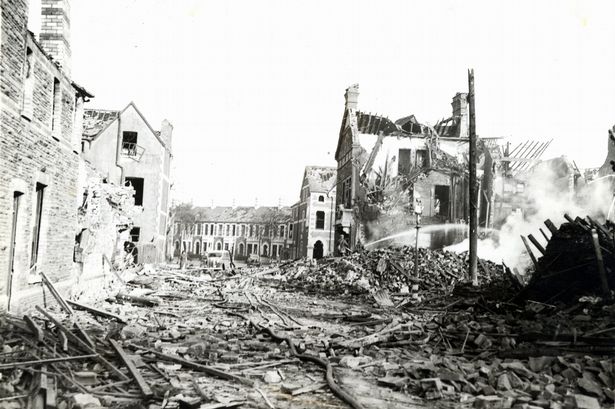Only two months after Germany had bombed Britain’s northern city of Coventry during World War II did the Nazis then turn to Cardiff in Wales.
The Third Reich’s Luftwaffe was its pride and joy and was successful at bombing raids across the British Isles and Europe. Its intention was to decimate each of Britain’s major towns one by one.
The locals in towns all over the UK were not ringing in the New Year of 1941 with joy. Instead, they were fearing where and when the next Nazi air attack would occur. Herman Goering, a leading Nazi party member, had been heard as saying he would like to recreate their attack on Coventry across the whole of the UK.
On January 2, 1941, it came to Cardiff.
Earlier on the same day, Britain had launched a devastating air attack on Germany’s city of Bremen. The city was Germany’s second largest port and housed Nazi docks and factories. In retaliation, Germany headed for Cardiff.
The bombing lasted just 35 minutes, but 165 locals lost their lives, 427 were injured and around 3000 were made homeless.
Some personal accounts of the attacks include 34 people being killed who had sheltered in the cellar of the local bakery in the Cardiff suburb of Grangetown. Meanwhile on Blackstone Street, 12 mourners at a funeral were bombed and killed. Singing was heard amongst the wreckage, and rescuers dug for six hours to find a small boy under a staircase.
Historians have since discovered more about the German pilots who took part in the raid. These included Sergeant Arnim Heidemann who served with the Nazis’ Kampfgruppe 100. The aircraft and crew were sent ahead to light up the target area by setting it alight as much as possible.
There were eight crews with this role during the attack. As the rest of the bombers arrived, they went on to bomb the city and the surrounding areas, the Wales Online reports.
According to German records, two aircrafts had to abort their mission, including Heidemann’s. They were, however, able to make it back to occupied France.
It has been found that the attack could have taken place a lot sooner in 1940, as many Kampfgruppe 100 crew and aircraft were based near Nantes, a twin city of Cardiff. At the time, Bristol and Newport were targeted.
Hilmar Schmidt another Nazi pilot who took part in the attack wrote in his diary about the events of that night. He had noticed dimmed lights in some areas of the city, but he didn’t think anything of it and thought it was of little concern that people were still without shelter. To the crew, it was just another job.
Kampfgruppe 100 was actually dismantled by the Nazi regime at the end of 1941, after the Blitz on the UK finished in May of the same year.
